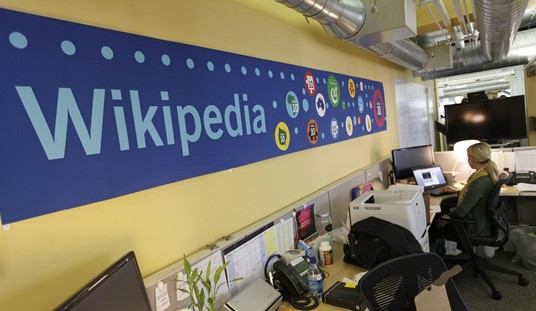I don’t know if the United States is headed for another literal civil war or not, but there’s little doubt that we are far more divided as a nation than when I was growing up. It’s not so much a case of registered Democrats versus registered Republicans as it is liberals versus conservatives. Or perhaps socialists versus capitalists. Pick your own poison.
But the fact is that we can seemingly find a way to draw battle lines on virtually any subject. I didn’t see this one coming, however. There’s apparently an ideological divide over the type of jeans you wear. You need to pick either Wranglers or Levis. And the brand name patch on your butt will be a good indicator as to which side of the partisan war you reside on. (Wall Street Journal, subscription required)
Levi Strauss and Wrangler both got their start as the go-to jeans for cowboys, railroad workers and others who pioneered the American West. Today, they are on opposite sides of a political divide that is affecting not only how people vote but what they buy.
Consumer research data show Democrats have become more likely to wear Levi’s than their Republican counterparts. The opposite is true with Wrangler, which is now far more popular with Republicans.
There is no simple explanation behind those consumer moves. Some of it is due to social and political stances companies are taking, such as Levi’s embrace of gun control. Some is tied to larger geographic shifts in the political parties themselves, as rural counties become more Republican and urban areas lean more Democratic. Wrangler is popular in the cowboy counties of the West and Midwest while San Francisco-based Levi’s resonates more with city dwellers.
I had to run upstairs to my closet when gathering information for this article because I honestly had no idea what brand of jeans I own. Some of them were off-brand, but sure enough, the few name brand pairs of jeans I own are Wranglers. And the odd part is that I ended up with them without having any idea that this sort of ideological clothing war was going on.
How does that happen? Is it just yet another random synchronicity in a universe that’s more complicated than we can fully understand? More likely is the possibility that I’ve fallen victim to subtle differences in advertising. As noted in the WSJ article, Levi’s definitely tends to brand their commercials with a more socially woke flair, while Wranglers skews more toward the rural, no-nonsense cowboy culture. I’d like to flatter myself and think I base my choices on the best fit and level of comfort, but the human mind plays all sorts of tricks on us that we’re not always aware of.
So if we assume that this divide in the jeans world is real, does that make these brands the next generation of “gang colors” in the culture wars? Will Antifa members soon be hurling cups of milkshakes mixed with cement at anyone seen wearing Wranglers, even sans a MAGA hat? There are the makings of a potentially chilling, dystopian movie script buried in that question.
That got me to wondering what other brands and images are already blocked off by the ideological divide. I don’t mean that obvious clothing with slogans or icons, like MAGA hats or DNC/RNC decorated shirts. One example could be clothing displaying rainbow colors. That symbology has been pretty effectively taken hostage by the LGBTQ community when it originally just represented happiness and optimism. (Or God’s covenant with humanity after the flood, if you prefer.) I haven’t found too many instances of direct physical attacks on people sporting rainbow gear here in the United States yet, but security guards in China have reportedly attacked women wearing such clothing in Beijing.
What’s next? T-shirts with pockets will be conservative and those without pockets will be liberal? At this rate, we’re heading toward the point where people with no particular ideological affiliation at all will start being attacked on the street for wearing something they simply thought looked nice or comfortable. And before you ask… yes. It actually is much worse than it used to be. And that’s almost entirely the fault of the internet and social media. But that’s a debate for another day.








Join the conversation as a VIP Member